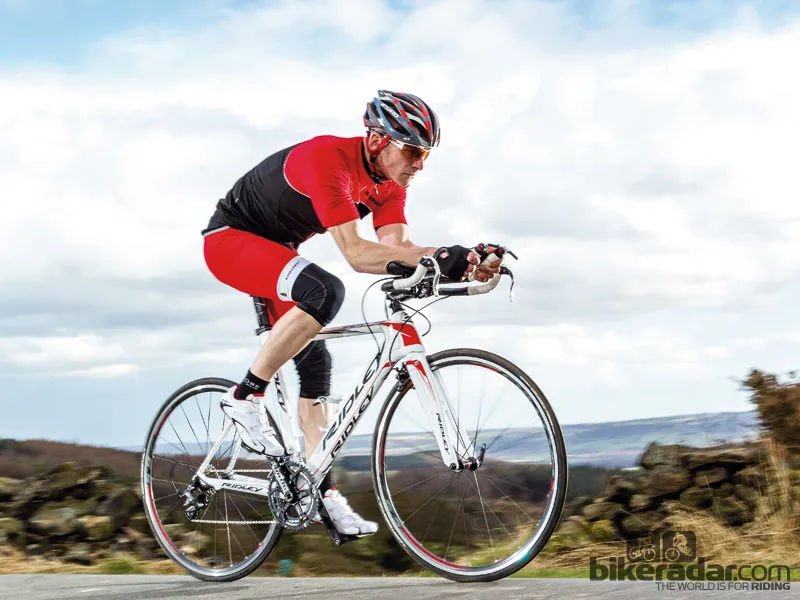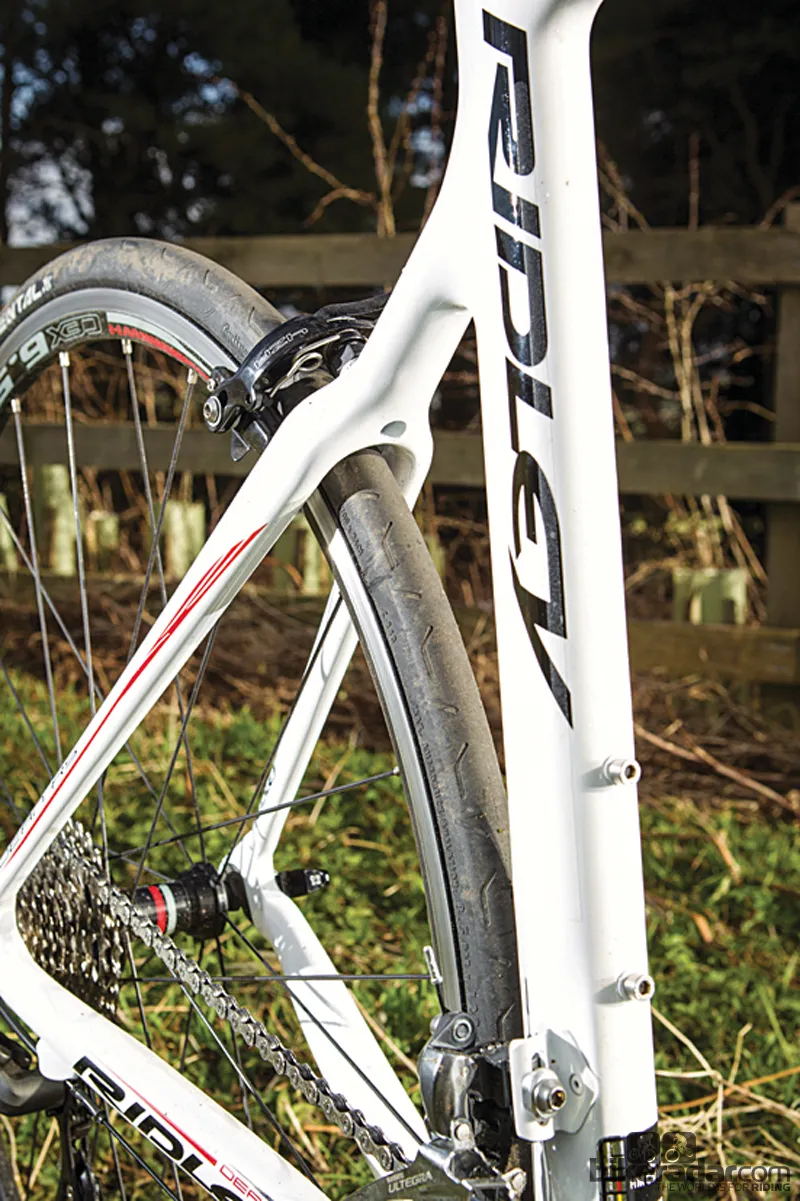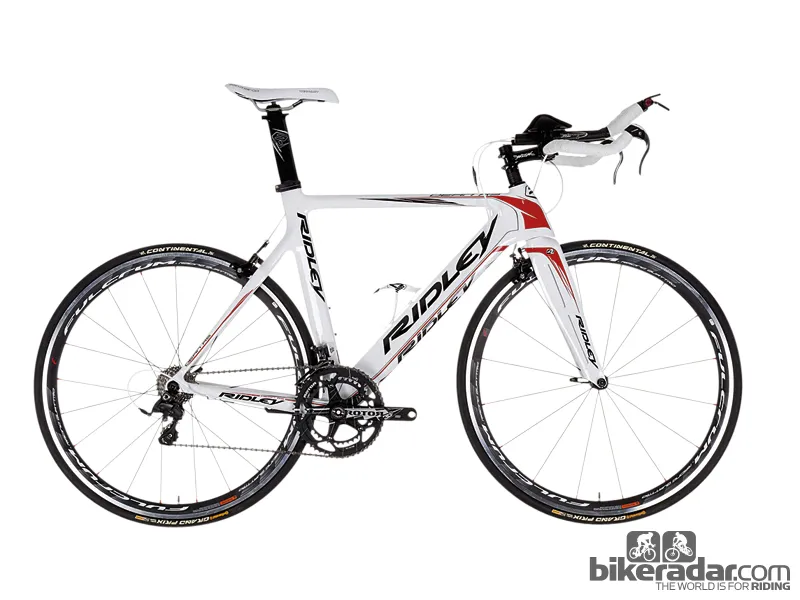Ridley’s Dean RS landed last year, and riding it back to back with other bikes, for a grouptest, really proves its distinctive but seemingly very effective aerodynamics, and its composed comfort and handling character.
Ride & handling: Light, responsive and with fatigue-reducing comfort
Whatever the wheels, the Ridley makes a positive impression straight away. The front end might be radical but the default riding position feels anything but. Arms fall easily into the Deda pads and the MicroSHIFT tip levers feel light and precise as you click through the gears. We were shifting noticeably faster than we have done on some other bikes as we got up to speed.
The low weight of the bike combines with impressive power delivery to give it real pop. Whether we were pushing up the revs or attacking climbs on rolling courses, it always felt eager and enthusiastic, rubbing the other bikes’ noses in its responsiveness. Once you’ve got it up to speed it holds onto it really well, not least because the handling is excellent.
The deep fork and shallow-section rear tubes mean there’s a definite forward bias to its aerodynamic balance, giving secure and surefooted front end placement at any speed. It’s a good job too, as the slab-sided T100 wheels on the more pricey version snatch and gust badly even in light winds, to the point where we didn’t trust them not to wipe out our photographer on one extremely windy test day.
In calm conditions they cleave the air nicely, though, for an unstoppable, PB-smashing feel – and they’re a reasonable price when bought as part of the package. Top-quality Italian tub tyres add speed as well as a surprisingly smooth glide on such deep wheels, and even the Fulcrum options get premium Continental clinchers.
The frame and fork are both surprisingly forgiving for such a naturally fast and power-efficient bike, which makes the Ridley a pleasure to ride rather than a place to sit and suffer.
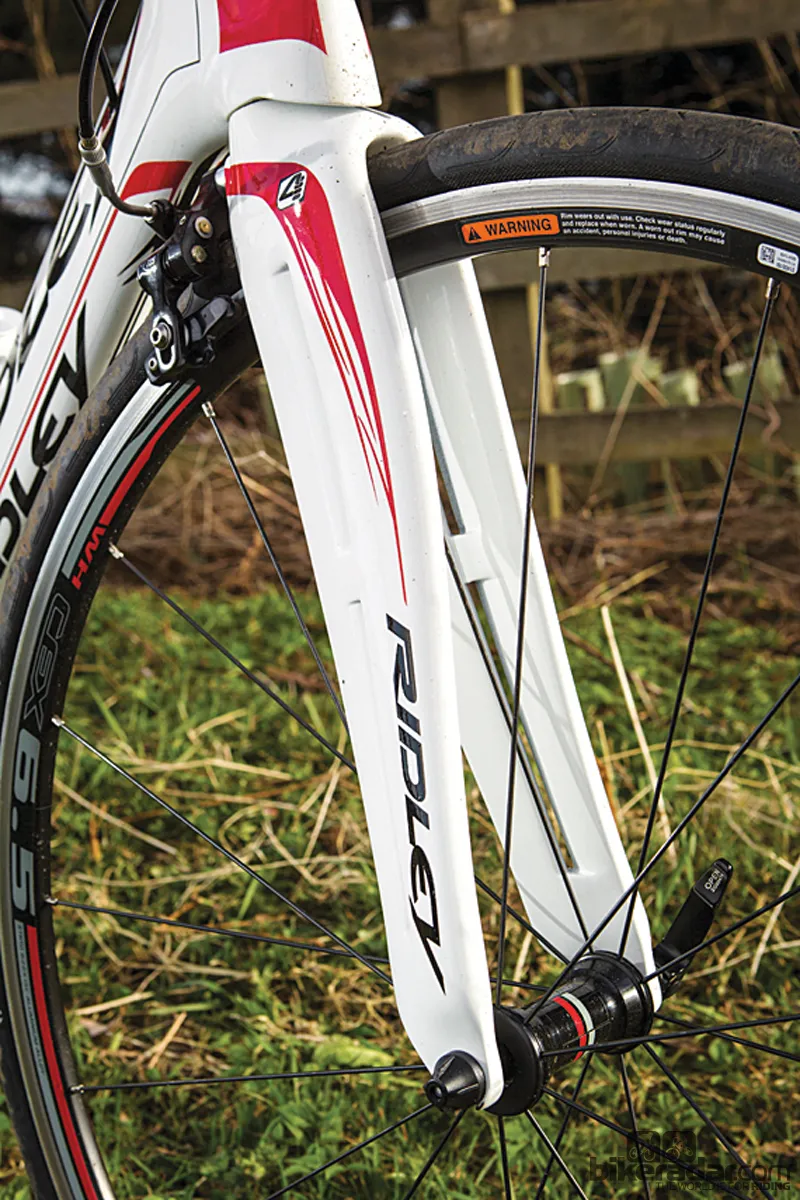
The unique F-Splitfork and drooped-nose head tube create a clean front end
The bars and saddle are welcoming from the first mile, until you hop off and pad into the transition zone. Just make sure you do most of your braking with the front when you arrive as, like most cam assisted brakes, the rear one is decidedly spongy and the Dean is likely to be travelling faster than you expect.
Combining obvious and more subtle aerodynamic innovations with solid power delivery creates a forgiving ride character. Add to that an excellent specification for the money and the Ridley Dean RS is a standout ride.
Frame & equipment: Excellent default ride position and good-value wheels
The fork and front end get things off to a thought-provoking start. The F-Splitfork puts two thin blades one behind the other in a staggered arrangement that’s designed to pull airflow away from the turbulence created by the spinning spokes.
The heavily shaped, back-sloped head tube extends down over the front of the fork, covering the mounting hole needed for the rear-mounted U-brake for a claimed front end drag reduction of 6.4 percent.
In other places, though, smoothness is deliberately disturbed with strips of rough textured tape added at strategic areas. The idea is to create a tiny amount of turbulence in the surface airflow, which smooths the overall airstream (Ridley claim a 3.6 percent drag decrease). Control cables feed into the down and top tubes to keep things clean.
The rest of the frame uses relatively conventional aerodynamics, with an ovalised down tube and the merest hint of a wheel-hugging cutout in the aero seat tube. A single-bolt sliding rail saddle clamp adjusts the effective seat angle, while a deep twin-bolt collar keeps your saddle height secure.
Five frame sizes make it easy to find an accurate fit. High-modulus carbon fibre construction and direct-mounted headset bearings mean it’s an impressively light frame, although that’s slightly offset by the heavy fork.
Overall weight is relatively – impressive considering the all-alloy cockpit, mixed Shimano Ultegra/105 spec and Rotor 3DF cranks that prioritise stiffness compared with the lighter 3D+ version.
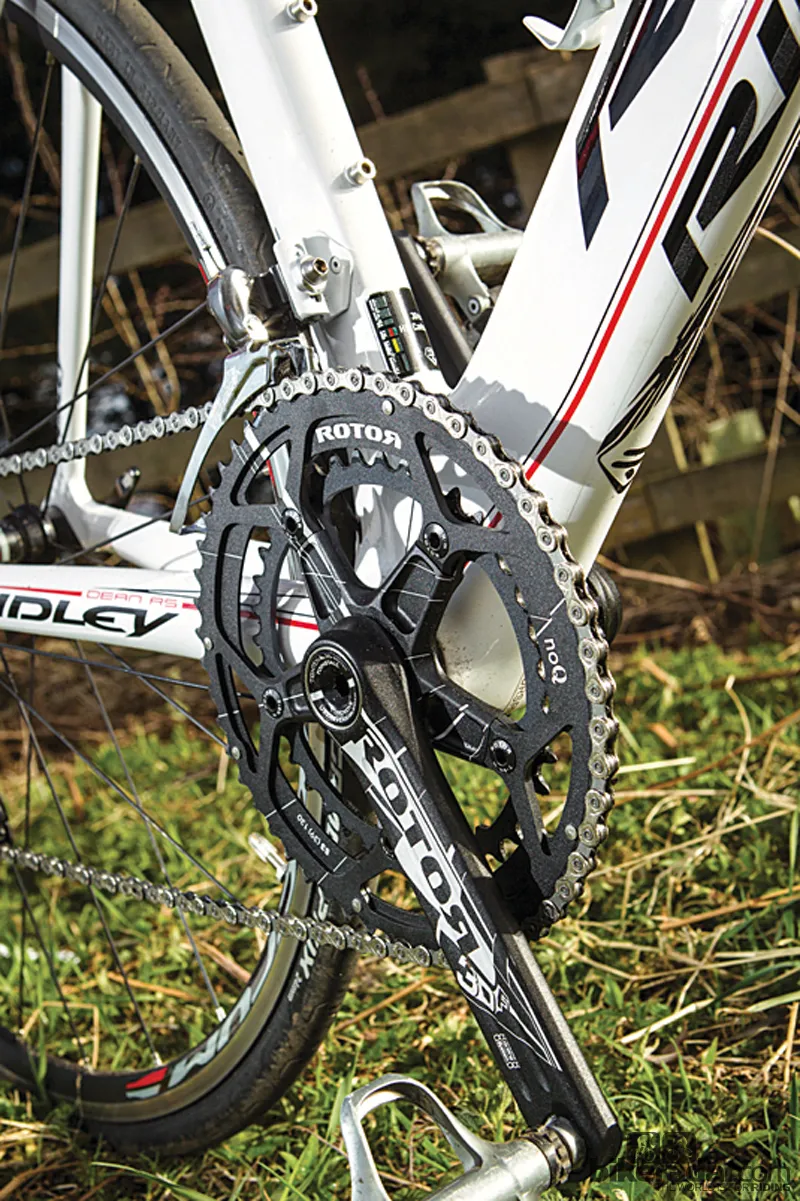
Rotor cranks look good and give a solid foothold
Deeply hooked base bars keep hands feeling secure on descents, the pad position makes it easy to find a comfortable tuck and the curved Selle San Marco TT saddle is a great place to rest your rump even when rolled right forward.
There are two wheel options to choose from: this 1312B has smooth-rolling but not particularly aero Fulcrum Racing 4 wheels at £2,920; and the 1312A comes with 100mm-deep Cirrus tubulars for £3,665. Due to some difficult weather, we ended up testing both.
This article was originally published in Triathlon Plus magazine, available on Zinio.
